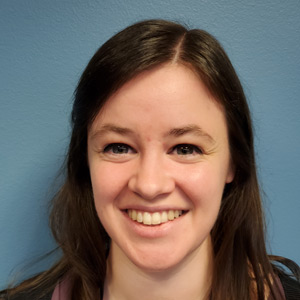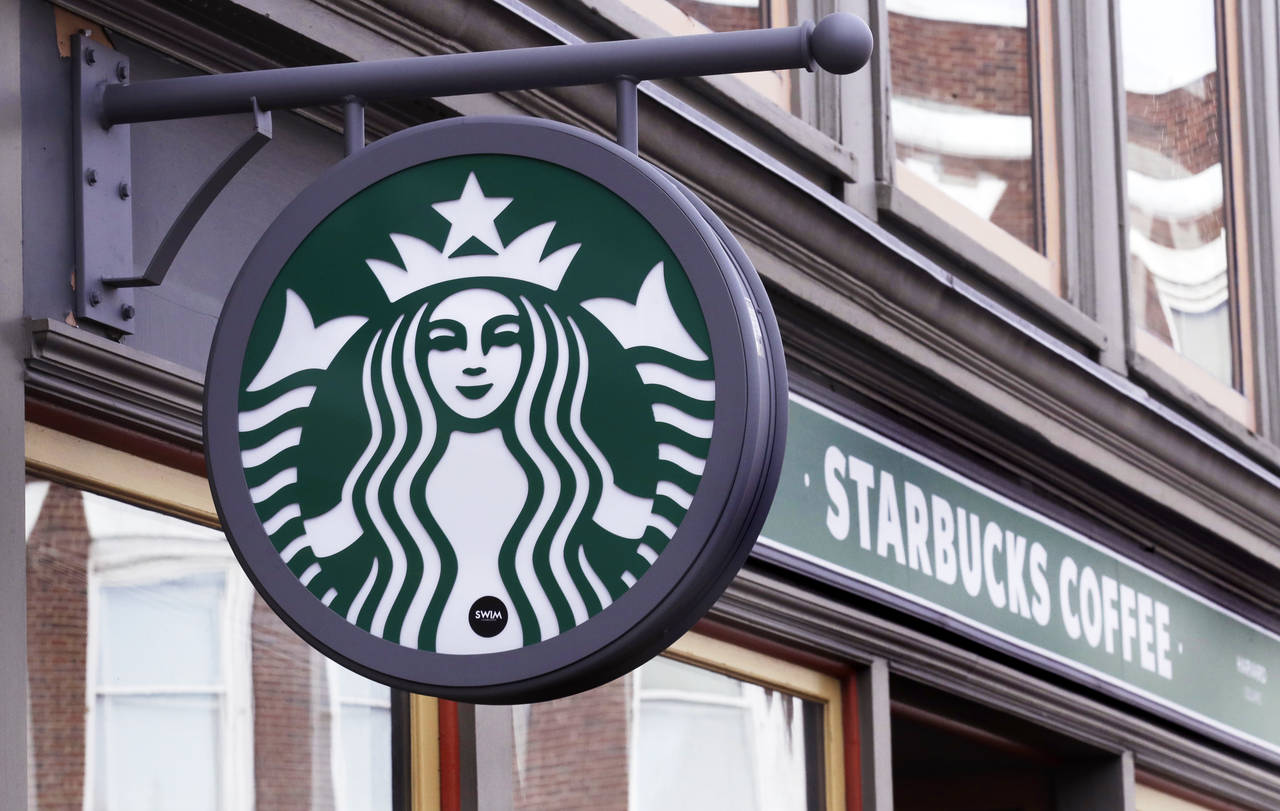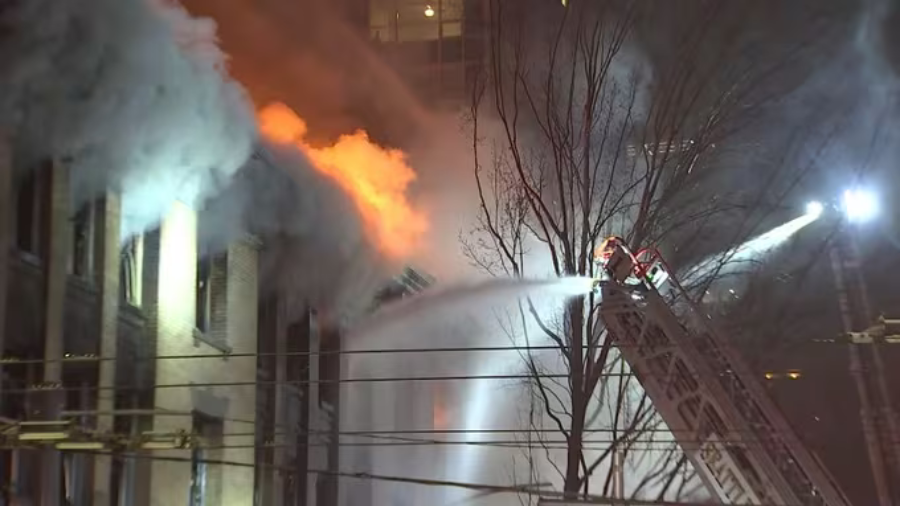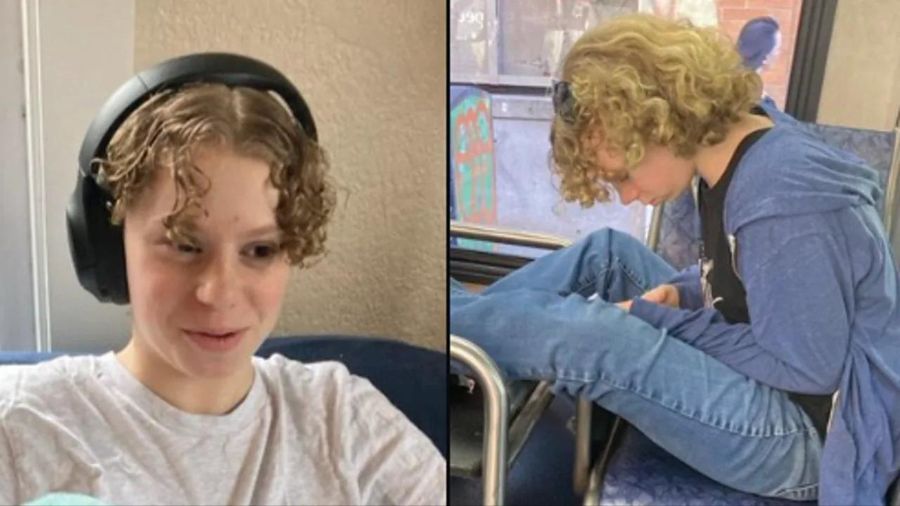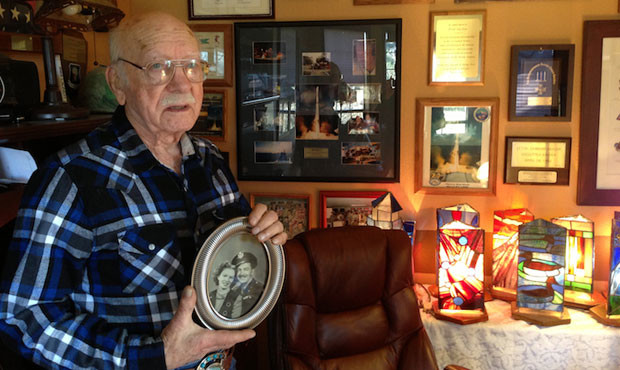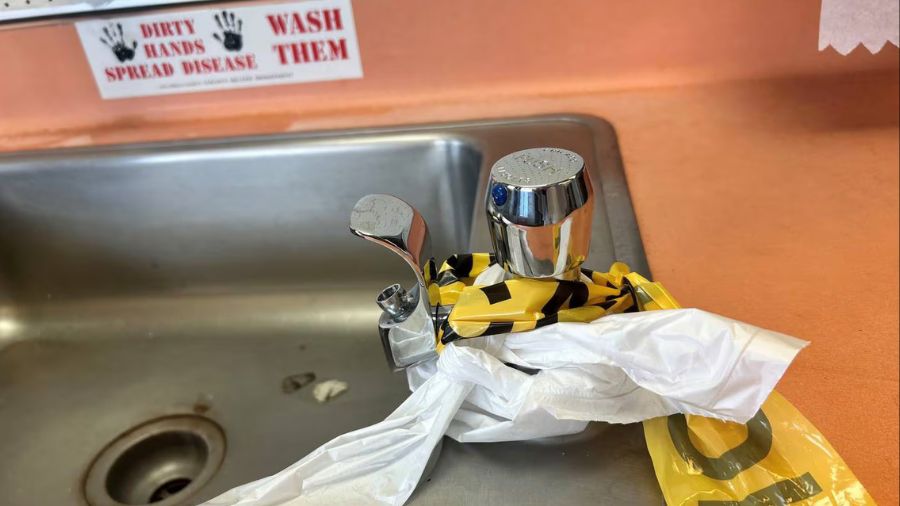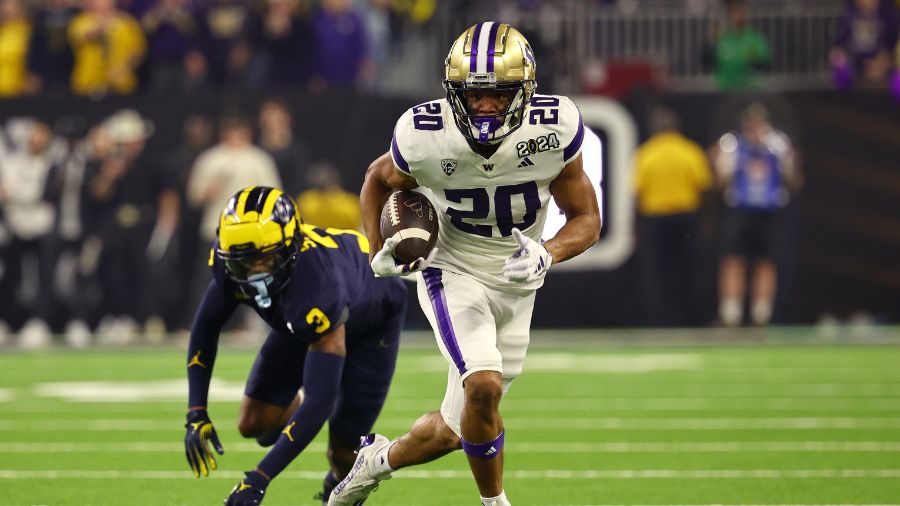Community transmission in Washington must drop if schools are to reopen
Jul 16, 2020, 2:12 PM

Bothell High School. (Photo by Karen Ducey/Getty Images)
(Photo by Karen Ducey/Getty Images)
Washington state health officials and local leaders joined together Wednesday to discuss the findings of a new report published by the Institute for Disease Modeling in regards to reopening schools in the fall, and what it implies for the community as a whole. The report is titled, “Schools are not islands.”
Dr. Jeff Duchin, health officer with Public Health – Seattle & King County, called the report “sobering.”
“It is telling us that, at this time, there is too much COVID-19 transmission in our community to support school reopening,” Duchin said.
The report’s findings reflect the interdependence of a community.
“[Everything] that we do as individuals – in business settings, at workplaces, restaurants, pubs, recreationally, socially, in family settings – everything that we do with respect to COVID-19 transmission impacts our ability to move forward in schools and each of these sectors independently.”
Until everyone does everything they can in every sector of society to limit COVID-19 transmission, the state is unable to move forward safely, whether with reopening schools or restarting the economy.
Reducing transmission, Duchin explained, involves decreasing the number, intensity, and proximity of contacts with others, decreasing social activities, increasing distance to six feet between each other, wearing face masks, washing hands, and understanding how interconnected we all are.
“We need to, in every aspect of our lives, … do a big-time reboot of how we’re going forward now in the era of COVID-19,” he said. “We moved forward too quickly and too happily after our stay home order, and we are seeing too much transmission.”
Levels of new cases in King County alone have approximately tripled since mid-June, Duchin reported, and the reproductive number is rising, heading in the wrong direction.
“If we continue to head in the wrong direction, it will be extremely difficult to bring students back to school,” Duchin said. “So everyone needs to stop and reset how they’re thinking about going about their lives in the era of COVID-19. This will be a long-term, sustained challenge for our community, and we need to fundamentally change the way we interact with one another in every aspect of our lives if we’re going to manage it safely.”
Dan Klein, senior research manager at IDM, shared an overview of the new report and two main results, regarding what happens inside and outside of schools.
“Basically, what the model is showing is that these counter measures within schools are necessary, and that they help bring this reproductive number down and allow us to potentially reopen schools,” Klein said.
“What happens outside of schools is even more important than what happens inside of schools,” he added. “… COVID isn’t just a schools’ problem. Schools, the models show, have a role — I think they’re taking that seriously, and we also need to take it seriously as a community to bring down transmission.”
Lacy Fehrenbach, deputy secretary for COVID-19 response with the state Department of Health, underscored the importance of community behaviors to reduce the transmission rate if we want schools to reopen in the fall. This means wearing face coverings, keeping our distance from others, teleworking if you can, avoiding parties and social gatherings, and washing our hands often, she said.
“We can all do our part to make this happen,” she added.
The pandemic and the science of the pandemic are rapidly evolving, and the DOH is continuously looking at their recommendations for schools.
“Our current guidance includes many of the measures Dan discussed – symptom screening, face covering for students and staff, physical distancing, grouping or cohorting of students, and increased hand hygiene, cleaning, and ventilation,” Fehrenbach said.
The DOH also recognizes that attending school has physical, social, and emotional benefits for children and young people, which she says is a huge factor in the decision making. The DOH is also thinking beyond the impact on students, and considering the risk to teachers, staff, the families that children and employees will return home to at the end of the day, and the larger community.
Washington parents, teachers weigh in on anxiety surrounding return to school
While children appear to be less likely to get COVID-19 and pass it on, they do still get it and can transmit it, Fehrenbach said.
“In addition, schools are amazing because of the great people who work in them, and if these adults get sick, that jeopardizes our ability to keep schools open for in-person learning,” she said. “So we really are thinking holistically about the risk and benefits for the students, the employees, and their families in the broader community.”
“What’s happening in the community matters just as much as what happens in the schools,” she added.
From an economic standpoint, the perspective is similar. Markham McIntyre, executive vice president of the Metropolitan Seattle Chamber of Commerce, said reopening schools is essential for economic recovery post-pandemic.
“This study shows that our top priority to help schools reopen must be controlling the spread of the virus in our community,” McIntyre said, echoing the others. “And the single best way to do that is to wear your dang mask properly. There are numerous studies that show that if 80% of people wear masks properly, you can dramatically reduce community transmission. But we’re clearly not there yet, and we must do better.”
The chamber and King County have distributed more than 2 million masks to businesses, but they only work if they’re worn, he added.
“This really is on us,” McIntyre said. “We control our community transmission destiny. Each of us has a role to play to help control the spread of the virus so we can reopen schools and help our economy recover.”
“The bottom line is: If you care about reopening the economy, if you care about getting our kids back to school, and if you care about equity,” McIntyre added, “wear your mask properly and practice physical distancing.”

